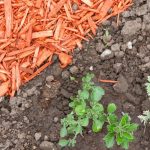
Have you ever wondered how to achieve that lush, healthy lawn that neighbors envy? The secret lies in proper lawn aeration. In this blog post, I will guide you through the ins and outs of lawn aeration, from understanding its purpose to choosing the right method and the best time to aerate your lawn.
Let’s get started on the path to a beautiful, vibrant lawn!
Short Summary
- Aeration is essential for maintaining a healthy lawn and should be determined based on factors such as soil type, grass variety, compaction & thatch buildup.
- Climate conditions must also be taken into account when aerating to ensure the right balance of soil moisture.
- Professional services or DIY approaches can both provide successful results if done at the recommended timing & frequency guidelines.
Understanding Lawn Aeration
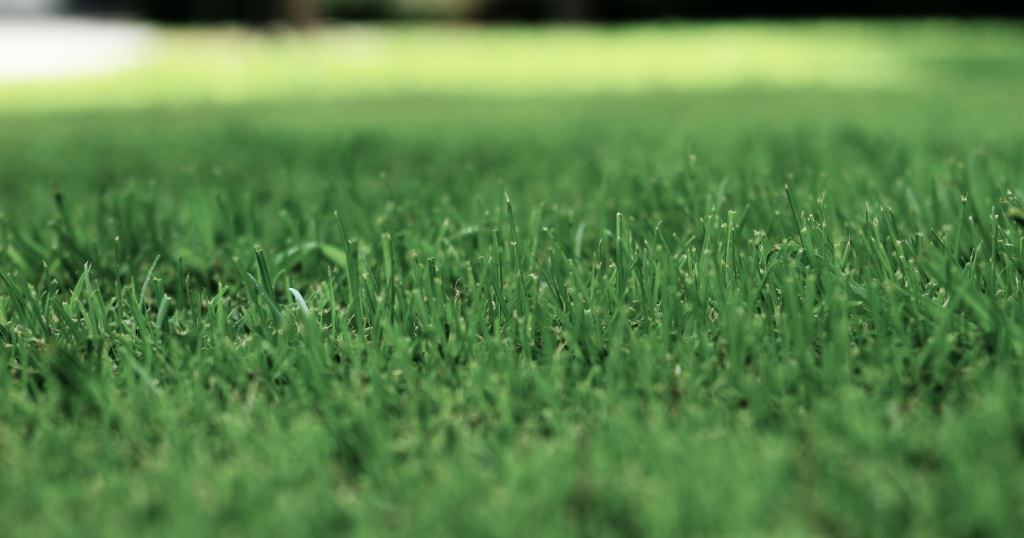
Lawn aeration is a crucial aspect of lawn care that many homeowners overlook. It involves creating holes in the soil to facilitate the circulation of air, water, and nutrients, which are essential for a healthy lawn.
Aeration helps alleviate soil compaction, a common issue that prevents grass roots from accessing vital resources. So, how do you know if it’s time to aerate your lawn? The key lies in understanding the purpose of aeration and identifying the need based on signs of compaction and thatch buildup.
There are various methods of lawn aeration, including manual techniques and specialized tools like core, spike, slice, and liquid aeration. Each method has its advantages, and the choice depends on factors such as soil type, lawn condition, and personal preference.
This is important when you live in Florida like Winter Garden, as the soil compacts and can’t drain properly.
In the following sections, we will delve deeper into the purpose of aeration, discuss different aeration methods, and provide guidance on when and how to aerate for the most benefits.
The Purpose of Aeration
Aeration is crucial for maintaining a healthy lawn, as it alleviates compaction and thatch accumulation, allowing grass roots to grow and access essential nutrients more effectively. Compacted soil and excessive thatch can hinder the circulation of air, water, and nutrients, leading to poor grass health and an unsightly lawn.
Core aeration, which involves extracting plugs of soil and thatch from the lawn, is particularly effective at reducing compaction. The holes created by core aeration allow air, water, and nutrients to penetrate the soil more easily, promoting healthy root growth and a lush, green appearance.
By understanding the purpose of aeration, you can make informed decisions about when and how to aerate your lawn for the best results.
Types of Aeration Methods
The right aeration method for your lawn depends on factors such as soil type, grass variety, and the extent of compaction or thatch buildup. Core aeration, which uses hollow tines to mechanically extract plugs of soil and thatch, is considered the most effective method for reducing compaction.
This method is particularly suitable for lawns with heavy clay soil or high-traffic areas, where compaction is more likely to occur.
For sandy or loamy soils, spike, slice, and liquid aeration methods may be more appropriate. Spike aeration involves forcing the soil to move sideways as wedge-shaped spikes penetrate it, while slice aeration uses a blade to create diagonal incisions in the soil.
Liquid aeration works differently to traditional aeration; it relies on spraying an enzymatic solution over the lawn surface. This breaks down thatch and improves the soil’s health.
Each method has its advantages and drawbacks, so it’s essential to consider your lawn’s specific needs when choosing the most suitable method.
Identifying the Need for Aeration
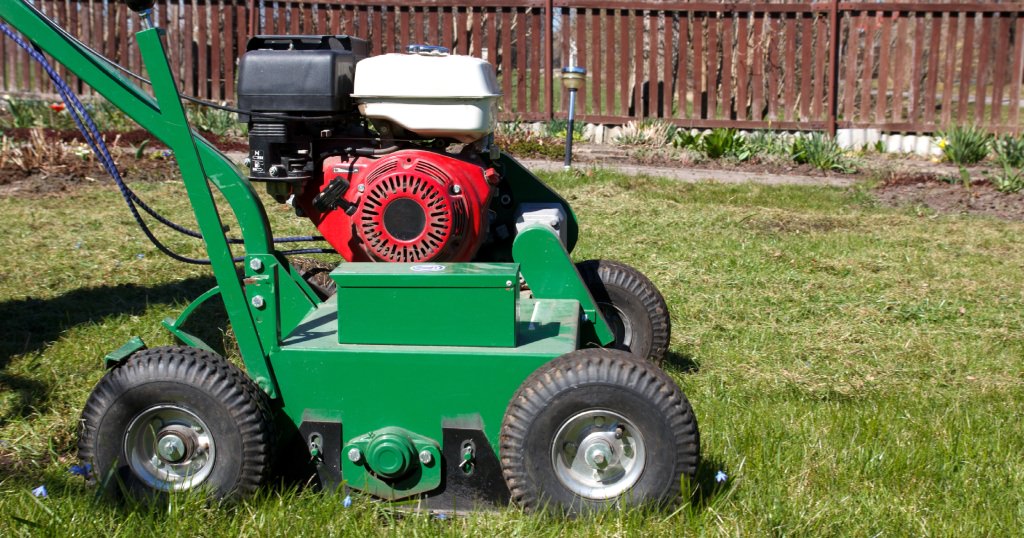
The need for aeration can be identified by observing signs of compaction and thatch buildup in your lawn. Lawns with substantial traffic, arid environments, or newly constructed residences with stripped topsoil may require more frequent aeration.
In the following sections, we will explore the signs of compacted soil and thatch management techniques to help you determine when it’s time to aerate your lawn.
Signs of Compacted Soil
Compacted soil can have a detrimental impact on your lawn’s health and appearance. When the soil is hard and impermeable, grassroots struggle to access water, air, and nutrients, leading to poor growth and an unsightly lawn.
Signs of compacted soil include footprints that do not rebound, grass that does not grow adequately, and difficulty inserting a garden fork or shovel into the soil.
By identifying the signs of compacted soil, you can determine when it’s time to aerate your lawn and choose the appropriate aeration method. Core aeration is particularly effective at alleviating compaction, while other methods like spike, slice, and liquid aeration may be more suitable for sandy or loamy soils.
Thatch Management
Thatch buildup is another issue that can affect your lawn’s health and appearance. Thatch is a layer of dead grass situated between the soil and green grass. An excessive thatch layer can prevent water, air, and nutrients from reaching the grass roots, resulting in an unhealthy and unattractive lawn.
To manage thatch buildup, it’s essential to remove the layer of dead grass between the soil and green grass. Aeration, particularly core aeration, can help break down thatch and improve the overall health of your lawn. By identifying and addressing thatch buildup, you can ensure your lawn remains healthy and vibrant.
Timing Your Lawn Aeration
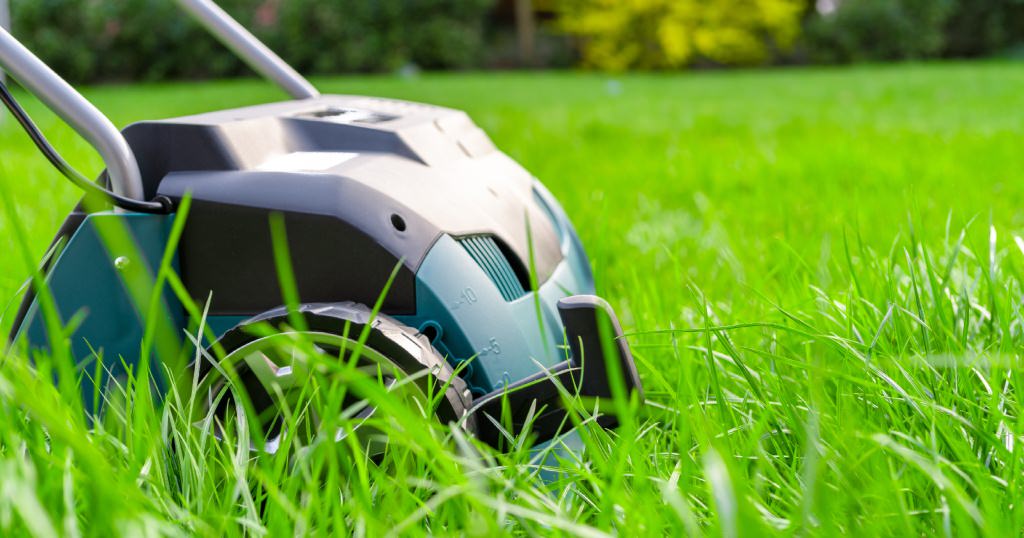
Timing your lawn aeration is crucial for achieving the best results. The optimal time for aeration depends on factors such as grass type, growing seasons, and climate conditions.
In the following sections, we will discuss how to determine the best time to aerate your lawn based on these factors, ensuring your grass remains healthy and lush throughout the year.
Grass Type and Growth Seasons
The ideal time for aeration depends on the type of grass in your lawn. For warm-season grasses, such as Bermuda or Zoysia, it’s best to aerate in the early spring or early summer, when the grass is actively growing.
On the other hand, cool-season grasses like Kentucky bluegrass or fescue should be aerated in the early spring or early fall. Aeration during these periods ensures that the grass can recover quickly from the process and benefit from the increased circulation of air, water, and nutrients.
It’s important to avoid aerating during periods of dormancy, as this can stress the grass and potentially damage your lawn. By considering your grass type and growth seasons, you can determine the best time to aerate your lawn and ensure its continued health and vitality.
Climate Considerations
Climate can also have a significant impact on the optimal timing for lawn aeration. In regions with heavy precipitation or drought, it’s essential to choose a time when the soil is moist but not overly saturated.
Aerating moist soil ensures that the lawn aerator can penetrate more deeply and create more effective holes, benefiting your lawn’s health and appearance.
For regions with mild to moderate precipitation, such as the Pacific Northwest, aerating during the spring or fall months when soil moisture is balanced can yield the best results. By taking climate conditions into account, you can ensure that your lawn aeration is timed to provide the most benefits for your grass.
Choosing the Right Aeration Method
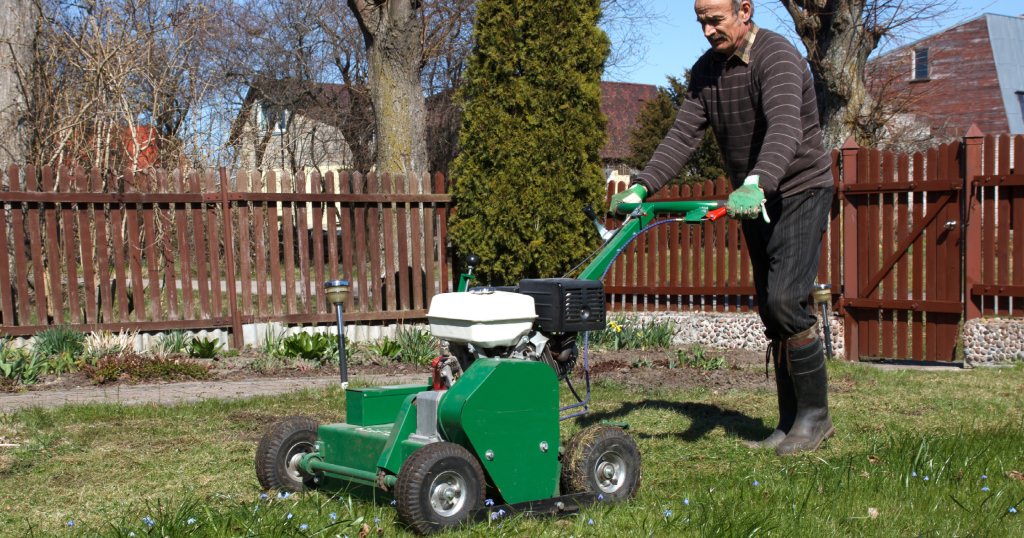
Selecting the right aeration method for your lawn depends on factors such as soil type and the extent of compaction or thatch buildup. Core aeration is generally considered the most effective method for reducing compaction, particularly in heavy clay soils or high-traffic areas.
However, other methods like spike, slice, and liquid aeration may suit sandy or loamy soils with less compaction. In the following sections, we will explore the benefits of different aeration methods and provide guidance on choosing the most appropriate method for your lawn.
Core Aeration for Compacted Soil
Core aeration is an ideal choice for lawns with compacted soil, as it effectively alleviates compaction by removing small plugs of soil from the surface. This method allows air, water, and nutrients to penetrate the soil more easily, promoting healthy root growth and a lush, green appearance. Core aeration is particularly effective in heavy clay soils, where compaction is more likely to occur.
If your lawn exhibits signs of compaction, such as footprints that do not bounce back or grass that does not grow well, core aeration may be the best solution. By choosing the appropriate aeration method for your lawn’s needs, you can ensure its continued health and vitality.
Spike, Slice, and Liquid Aeration
For lawns with sandy or loamy soils, spike, slice, and liquid aeration methods may be more appropriate. Spike aeration involves puncturing the soil with a tool, while slice aeration uses a blade to create diagonal incisions in the soil. Liquid aeration involves applying a liquid solution to the soil to break up compaction and improve the circulation of air, water, and nutrients.
Each of these methods has its advantages and drawbacks, so it’s essential to consider your lawn’s specific needs when choosing the most suitable method. By evaluating factors such as soil type, grass variety, and the degree of compaction or thatch buildup, you can select the best aeration method for your lawn and ensure its continued health and beauty.
Aeration Frequency and Scheduling

Determining the right aeration frequency and scheduling is essential for maintaining a healthy and vibrant lawn. Factors such as soil type, lawn traffic, and climate conditions can influence how often and when you should aerate your lawn.
In the following sections, we will discuss the factors that affect aeration frequency, as well as how to time aeration around other lawn care tasks for the best results.
Factors Influencing Aeration Frequency
Aeration frequency is largely influenced by your lawn’s soil type, usage, and climate. Heavy clay soils may require aeration a few times annually, while sandy soils may only need aeration once a year. Lawns with substantial traffic, such as those used for sports or recreation, may need more frequent aeration to maintain healthy grass and soil.
Climate can also impact aeration frequency, as extreme weather conditions such as drought or heavy precipitation can affect soil compaction and grass health. By considering these factors, you can determine the best aeration frequency for your lawn and ensure its continued beauty and vitality.
Timing with Other Lawn Care Tasks
Coordinating aeration with other lawn care tasks can help optimize the benefits of each procedure. For example, aerating before overseeding can help the seeds penetrate more deeply into the soil, improving germination and growth rates. Aerating after mowing or laying sod can alleviate soil compaction caused by these tasks and promote healthier grass and soil.
Additionally, regular aeration can help develop healthier soil and reduce thatch buildup, allowing air, water, nutrients, and grass seed to reach the root zone more effectively. By scheduling aeration around other lawn care tasks, you can ensure that your lawn remains healthy and vibrant throughout the year.
Hiring a Professional Service vs DIY Aeration
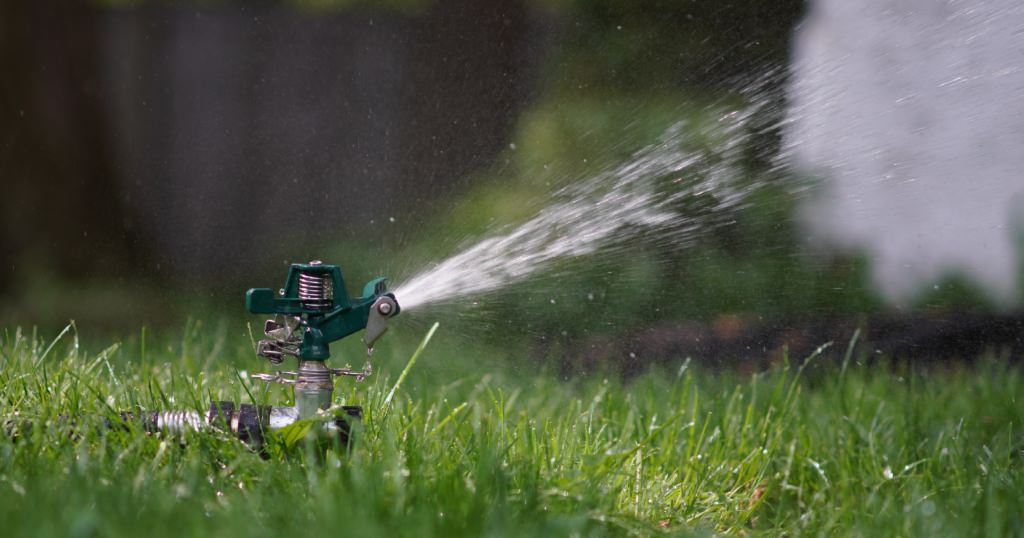
Deciding whether to hire a professional service or perform DIY aeration depends on factors such as cost, time, and personal preference. Professional services offer benefits such as expertise and convenience, while DIY aeration can provide you with more control over the process and potentially save money.
In the following sections, we will discuss the advantages of each approach and provide tips for successful aeration, whether you choose to hire a professional or go the DIY route.
Benefits of Professional Services
Hiring a professional service for lawn aeration offers several advantages, including expertise, convenience, and potentially improved outcomes. Professionals have specialized equipment and knowledge that can help you achieve a healthier, more attractive lawn. They can also save you time and effort by handling the entire process, from scheduling to cleanup.
In addition to expertise and convenience, professional services can help you determine the optimal timing and frequency for aeration based on your lawn’s specific needs. By engaging a professional service, you can ensure that your lawn receives the care it needs to thrive and increase its overall value and curb appeal.
DIY Aeration Tips
If you prefer the DIY approach, there are several tips you can follow to ensure successful aeration. First, you can rent aerator equipment from local garden supply stores or rental organizations, which often provide basic operating instructions.
When aerating your lawn, make sure to follow the recommended timing and frequency guidelines based on your grass type, soil, and climate conditions. Also, consider coordinating aeration with other lawn care tasks, such as overseeding or fertilizing, to optimize the benefits of each procedure.
By following these tips, you can achieve a beautiful, healthy lawn through DIY aeration.
Summary
In conclusion, proper lawn aeration is essential for maintaining a lush, healthy lawn. By understanding the purpose of aeration, identifying the need based on signs of compaction and thatch buildup, and choosing the right method and timing, you can ensure your lawn remains vibrant and attractive throughout the year.
Whether you decide to hire a professional service or tackle the task yourself, following the tips and guidance in this blog post will help you on your way to a beautiful, envy-worthy lawn. Happy aerating!
Frequently Asked Questions
What is the best month to aerate my lawn?
For optimal recovery time of your lawn, the best month to aerate is in the early fall or late spring. This allows cool-season grasses common in northern lawns to recover quickly after aeration in the fall, and warm-season grasses found in southern lawns to take advantage of the extra nutrients during the late spring and early summer.
When should you not aerate your lawn?
You should not aerate your lawn when it is dormant or when the soil is too wet. The ideal time to aerate is during active growing seasons, such as early spring and early fall for cool-season grasses and late spring and early summer for warm-season grasses.
Additionally, make sure that the soil is moist, but not wet, before aerating.
Do you aerate on wet or dry grass?
It is generally recommended to aerate on a lawn that is slightly damp – not wet or completely dry. Watering the lawn two days before and in the evening before aerating can help achieve this.
How often should I aerate my lawn?
For optimal lawn health, it is recommended to aerate your lawn once every 1-3 years, depending on the amount of traffic the lawn receives and the condition of your soil.
If your lawn receives a lot of foot traffic, or if the soil is highly compacted, aerating every year is beneficial.

